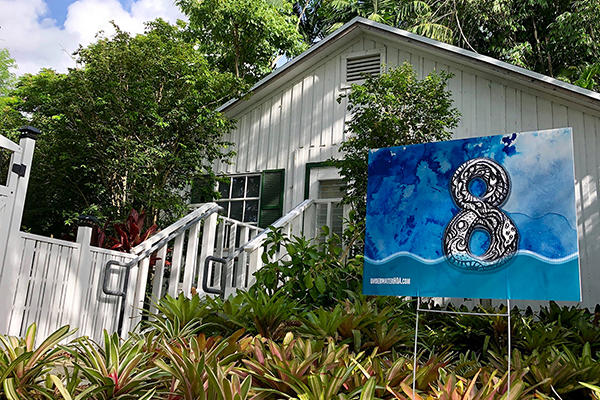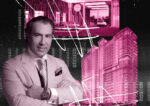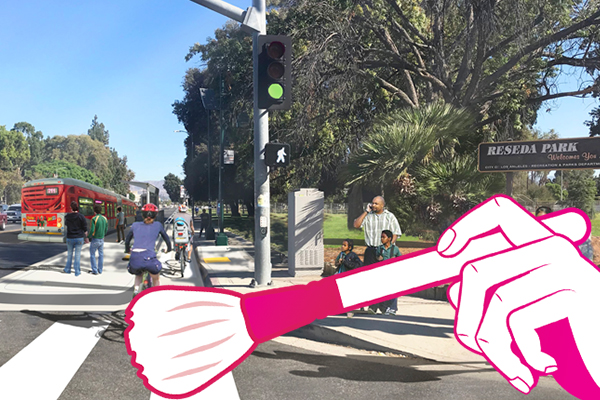Many artists use their work to convey messages about climate change, especially during Art Basel, the annual exhibition event in the Miami area that attracts art creators and collectors from around the world.
But this year, the most compelling climate-change works on display during Art Basel, a four-day event that ends Sunday, have come not from New Yorkers or foreign nationals but Miami-area artists.
South of the main venues of Art Basel in Miami and Miami Beach, for example, the Hibiscus Gallery in Pinecrest is exhibiting 100 blue-and-white watercolor paintings made with melted Antarctic ice. The artist, Xavier Cortada of Miami, will name 60 of the 100 paintings after coasts exposed to sea level rise.
Cortada also has created “Elevation Drive,” a public art project that comprises murals showing the elevation above sea level at four intersections on a segment of Killian Drive in Pinecrest. He invited home owners in the area to use his mural images as yard signs showing that their properties are above sea level.

(Credit: Xavier Cortada)Russian-born photographer and Miami Beach resident Anastasia Samoylova is displaying an exhibit called “Flood Zone,” more than 100 photos juxtaposing the Miami area’s self-promotion as a tourist destination with threats to the area from climate change. Samoylova is displaying “Flood Zone” at ArtCenter, her studio on Lincoln Road in Miami Beach, during Art Basel.
Local artist Linda Cheung has a mural in Wynwood that shows possible outcomes of Miami’s response to climate change when viewed with an augmented-reality (AR) software application. The mural shows construction cranes a Xanax pill, the drug for treating anxiety.
But when viewed through an AR app, Cheung’s mural turns into a three-dimensional image that prompts the viewer to choose “no change” or “be the change.” Choosing “be the change” will transform the image to a verdant and sustainable utopia and “no change” will produce a flooded dystopia.
Misrael Soto again is putting up Miami Beach street signs that he deployed during Art Basel last year. One sign with a single word, “stakes,” is positioned near a floodwater pump in Miami Beach and intended to draw attention to what is at risk as the city responds to climate change.
In November, Soto completed an exhibit called “Sand” in partnership with the government of Miami Beach. In the city’s Collins Park area, speakers ranging from poets and historians to city officials made public presentations on climate change in an arena that Soto built with sandbags. Soto told the Miami Herald he did not want the Sand project to coincide with Art Basel because it was aimed the local community, not the international art community. [Miami Herald] – Mike Seemuth




